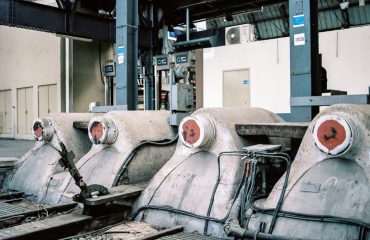The steel industry, a cornerstone of global infrastructure and manufacturing, faces a monumental challenge: achieving net-zero carbon emissions. This seemingly insurmountable task requires a radical transformation of production processes, a shift towards innovative technologies, and a collaborative effort across the entire value chain. This post delves into the complexities of achieving net-zero targets in steel production, exploring the hurdles and highlighting the promising pathways forward.
The Urgent Need for Decarbonization in Steelmaking
Steel production is notoriously carbon-intensive. The traditional blast furnace-basic oxygen furnace (BF-BOF) route relies heavily on coking coal, a major source of greenhouse gas emissions. This process accounts for approximately 7% of global CO2 emissions, making it a critical target for climate action. The urgency stems not only from the environmental imperative but also from increasing regulatory pressure and growing investor scrutiny. Many countries are implementing carbon pricing mechanisms and setting ambitious emission reduction targets, putting immense pressure on steel producers to decarbonize or face significant financial penalties and market disadvantages. The transition to net-zero is not just an environmental goal; it’s a business imperative for survival and long-term sustainability.
Exploring Alternative Steelmaking Technologies
The path to net-zero steel hinges on the adoption of alternative steelmaking technologies that significantly reduce or eliminate reliance on fossil fuels. Several promising pathways are emerging:
- Hydrogen Direct Reduction (HDR): This process uses hydrogen instead of coal to reduce iron ore, drastically reducing CO2 emissions. However, the availability of green hydrogen, produced through renewable energy sources, remains a significant challenge. Cost-effectiveness and scalability are also crucial factors for widespread adoption.
- Electric Arc Furnaces (EAFs): EAFs utilize electricity to melt scrap steel, significantly lowering emissions compared to BF-BOF. However, their reliance on the availability of sufficient scrap steel limits their potential for complete decarbonization. Improving scrap metal recycling infrastructure and practices is crucial for maximizing the impact of EAFs.
- Carbon Capture, Utilization, and Storage (CCUS): CCUS technologies capture CO2 emissions from steelmaking processes and either store them underground or utilize them in other industrial applications. While CCUS can play a crucial role in reducing emissions from existing facilities, its high cost and energy requirements remain significant barriers to widespread implementation. Furthermore, concerns about the long-term safety and security of CO2 storage need addressing.
- Bio-based reduction agents: Research is underway exploring the use of bio-based materials, such as biomass, as alternative reducing agents in steelmaking. While promising in terms of carbon neutrality, the scalability and efficiency of these processes need further development.
The Role of Renewable Energy and Energy Efficiency
Regardless of the chosen steelmaking technology, transitioning to renewable energy sources is paramount. The energy intensity of steel production is high, and decarbonizing the energy supply is crucial for achieving net-zero. This involves a massive investment in renewable energy infrastructure, including solar, wind, and hydropower, to power steel mills and produce green hydrogen. Furthermore, improving energy efficiency across the entire steelmaking process is essential. This includes optimizing production processes, implementing advanced control systems, and utilizing waste heat recovery technologies. These measures can significantly reduce the overall energy consumption and consequently the carbon footprint of steel production.
Supply Chain Collaboration and Policy Support
Achieving net-zero steel requires a collaborative effort across the entire value chain. Steel producers, energy suppliers, technology providers, and policymakers must work together to create a supportive ecosystem for decarbonization. This includes establishing clear policy frameworks, providing financial incentives for the adoption of low-carbon technologies, and fostering research and development in innovative solutions. Collaboration is also crucial for securing the supply of green hydrogen and other low-carbon inputs, as well as managing the challenges associated with waste management and recycling.
Challenges and Opportunities in Achieving Net-Zero Steel
The transition to net-zero steel presents significant challenges. The high capital costs associated with new technologies, the need for large-scale infrastructure investments, and the complexity of integrating different decarbonization pathways are major hurdles. However, significant opportunities also exist. The development and deployment of low-carbon steel technologies will create new jobs and economic opportunities, stimulate innovation, and enhance the competitiveness of steel producers. Furthermore, achieving net-zero steel will contribute significantly to global climate goals and pave the way for a more sustainable and resilient future.
The journey towards net-zero steel is ambitious but necessary. By embracing innovative technologies, fostering collaboration, and implementing supportive policies, the steel industry can forge a greener future and contribute to a more sustainable world.




